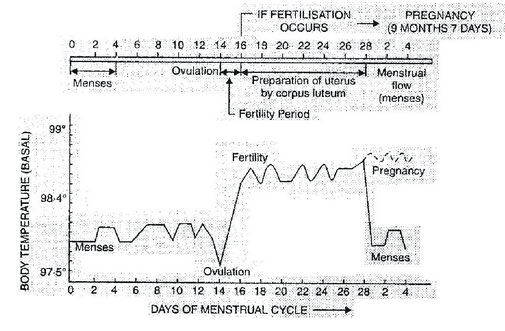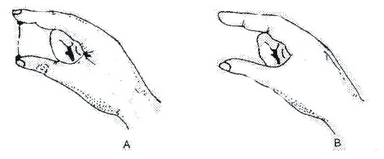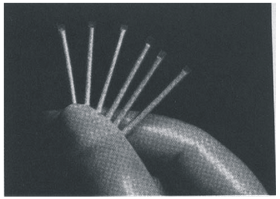Birth Control
Reproductive Health of Class 12
Few topics in modern society generate as much controversy as birth control. Birth control is any method or device that prevents births.
Birth control measures fit into two broad categories:
- contraception, ways of preventing pregnancy, and
- induced abortion, the deliberate expulsion of a fetus.

Contraceptive Measures Help Prevent Pregnancy
Above figure Summarizes the effectiveness of the most common means of contraception. Effectiveness is expressed as a percentage. A 95% effectiveness rating means that 95 women out of 100 using a certain method in a year will not become pregnant.
Natural Methods
They are methods which do not require any device, medicine or religious sanction. Natural methods are of three kinds—safe period, withdawal and breast feeding.
- Safe Period (Rhythm Method): Ovulation occurs roughly about the middle of menstrual cycle. Fertility period when fertilisation can occur is upto 48 hours after ovulation. Avoiding sex during the fertility period will naturally prevent conception. Ovulation period can be known as the temperature of the body dips to below average and then rises by about 1°F remaining there during the rest of the cycle.

Cervical mucus is slippery and can be drawn into a thread (Spinnbarkeit test) when stretched between two fingers. Period prior to ovulation is safe. Period after fourth day of rise in temperature (or last positive Spinnbarkeit test) is also considered safe. It is, however, always better to avoid sex from day 10-17 of the menstrual cycle.

- Withdrawal Method (Coitus Interruptus): The method is based on withdrawal of penis before ejaculation.
- Lactational Amoenorrhoea: Just after parturition, there is a phase of amoenorrhoea or absence of menstruation. It is also the phase of intense lactation. Breast feeding the child fully prevents conception. The method is, however, effective only upto a maximum period of six months.
Barrier Methods
They are mechanical devices which prevent the deposition of sperms into vagina and their passage into uterus. Further, they can be self inserted by the user in complete privacy. The common barrier methods are
condoms, diaphragm, fem shield and cervical cap.
- Condom: It is tubular latex sheath which is rolled over the male copulatory organ during sex. The common brand provided by family welfare services is Nirodh. The device also provides protection against sexually transmitted diseases including AIDS.
- Diaphragm: It is a tubular rubber sheath with a flexible metal or spring ring at the margin which is fitted inside the vagina.
- Fem Shield (Female Condom): The device is polyurethane pouch with a ring at either end. The inner ring is smaller and present at the inner closed end. The device covers the external genitalia as well as lines the vagina. Fem shield provides protection from sexually transmitted diseases.
- Cervical Cap: It is rubber nipple which is fitted over the cervix and is designed to remain there by suction. The device prevents the entry of sperms into uterus.
- Vault Cap: It is hemispheric dome like rubber or plastic cap with a thick rim which is meant for fitting over the vaginal vault over the cervix.
Chemical Methods
They are contraceptive which contain spermicidal chemicals. The chemical contraceptives are available in the form of creams (e.g., delfen), jelly (perceptin, volpar paste), foam tablets (e.g., aerosol foam, chlorimin T or contab). They commonly contain lactic acid, boric acid, citric acid, zinc sulphate and potassium permanganate. The contraceptives are introduced in vagina prior to sex. Sponge (Today) is a foam suppository or tablet containing nonoxynol-9 as spermicide. It is moistened before use to activate the spermicide. The device also absorbs ejaculate.
Oral Contraceptives (The Pills)
The birth control pill is the most effective temporary means of birth control available. Birth control pills come in several varities, but the most common is the combined pill. It contains a mixture of synthetic estrogen and progesterone. These hormones inhibit the release of LH and FSH, in turn, inhibits follicle development and ovulation. A minipill containing progesterone alone is also available. Even though it is less effective than the combined pill, the minipill is more suitable for some women because it results in fewer side effects.
Intrauterine Device
The next most effective menas of birth control is the intrauterine device (IUD). The IUD is one of the least used birth control measures. It consists of a small plastic or metal object with a short string attached to it. IUDs are inserted into the uterus by a physician, usually during menstruation, because the cervical canal is widest then and because menstrual bleeding indicates that the woman is not pregnant. No one knows exactly how the IUD works. Some researchers think that the IUD increases uterine contractions, making it difficult for the eary embryo to attach and implant in the wall of the uterus. Others think that the IUD creates a local inflammatory reaction in the uterine lining, resulting in an inhospitable environment for a newly formed embryo. As a result, implantation is blocked. It is possible that both mechanisms are operating.
Like other forms of birth control, IUDs have adverse effects. In some cases, the uterus expels the device, leaving a woman unprotected. Expulsion usually occurs within a month or two of insertion. The IUD may also cause slight pain and increase menstrual bleeding. These effects, however, are minor compared with two much rarer complications; uterine infections and perforation (a penetration of the uterine wall by an IUD). Women with IUDs are more likely to develop uterine infections than women practicing other forms of birth control. If not treated quickly, infections can spread to the uterine tubes, where scar tissue develops. This can block the transport of sperm and ova, causing sterility. Perforation of the uterus is a life-threatening condition requiring surgery to correct. e.g. Copper IUD commonly called copper Ts. CuT 200, Multiload CuT 250, Multiload CuT 375. Harmone releasing IUDs include progesterone IUD (e.g., Progestasert), Levonorgestrol IUD (e.g. LNG - 20)
Implants
They are hormone containing devices which are implanted subdermally for providing long term contraception. Norplant is progestin only device having six small permeable capsules (34 mm × 2.4 mm) each having about 36 mg levonorgestrel. They are inserted under the skin in a fan shaped manner inside upper arm or forearm through a small incision. Suturing is not required. Norplant remains effective for about 5 year Implanon is a single rod-like device (40 mm × 2 mm) which is implanted through a wide bored needle. It contains about 60 mg of 3-keto desogestrel. It remains functional for three years.










